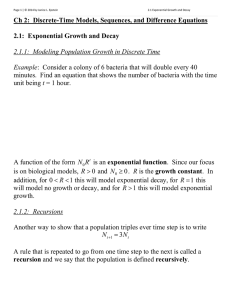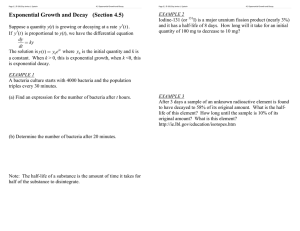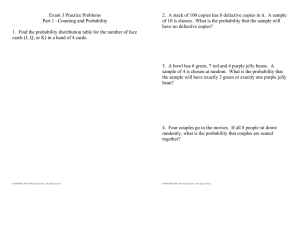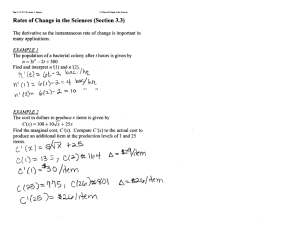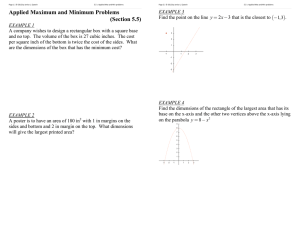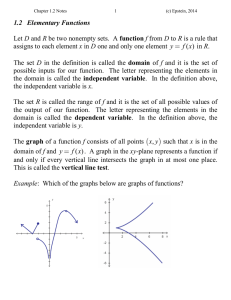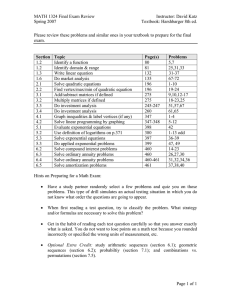advertisement
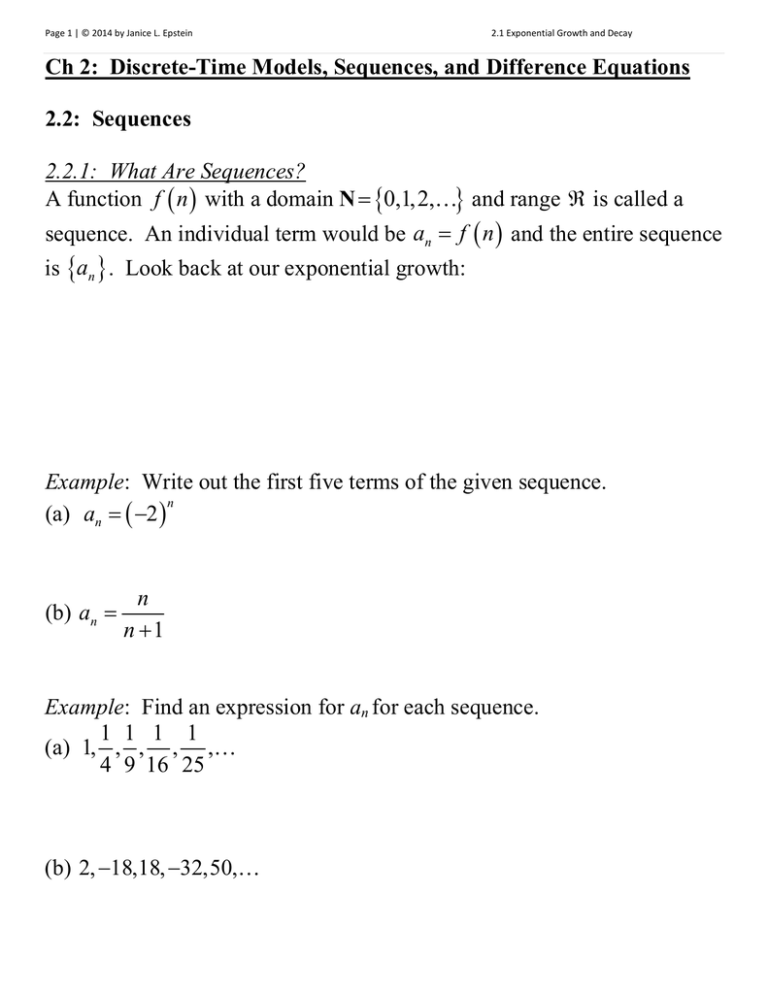
Page 1 | © 2014 by Janice L. Epstein 2.1 Exponential Growth and Decay Ch 2: Discrete-Time Models, Sequences, and Difference Equations 2.2: Sequences 2.2.1: What Are Sequences? A function f n with a domain N 0,1, 2, and range is called a sequence. An individual term would be an f n and the entire sequence is an . Look back at our exponential growth: Example: Write out the first five terms of the given sequence. n (a) an 2 (b) an n n 1 Example: Find an expression for an for each sequence. 1 1 1 1 (a) 1, , , , , 4 9 16 25 (b) 2, 18,18, 32,50, Page 2 | © 2014 by Janice L. Epstein 2.1 Exponential Growth and Decay 2.2.2: Limits If we study the long term behavior of a population, we will be interested in Nt as t Example: Find the long-term behavior of the following sequences. 2n , n 0,1,2, (a) an n 1 3n 2 , n 0,1, 2, (b) an n 1 (c) an a0 R n , n 0,1, 2, Page 3 | © 2014 by Janice L. Epstein 2.1 Exponential Growth and Decay 2.2.3: Recursions What if we want to find the long-term behavior but only have the recursive relationship? One way is to look at the terms and try to find the pattern that is the explicit solution (formula for an). This is not always easy or even possible. We can find possible solutions to the long term behavior (call them candidates) by finding fixed points for the recursion. A number a is a fixed point if a0 a then we have a1 a , a2 a , etc. Example: Find the fixed points (equilibria) for the following recursions. 1 (a) an 1 an 1 (b) an 1 2an 1 an (c) an 1 7an 2
